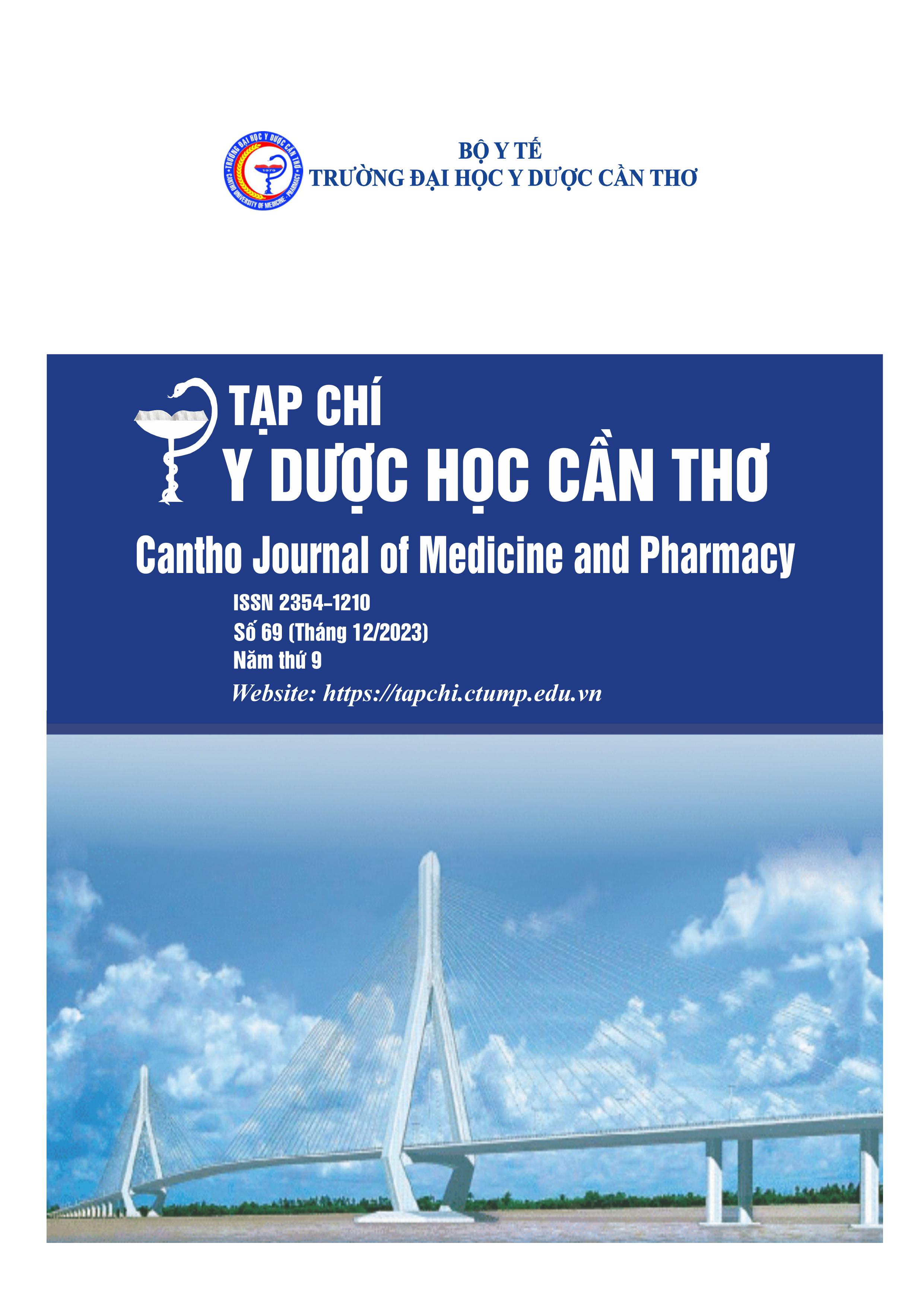CASE-BASED LEARNING (CBL) IN TRAINING STUDENTS OF HEALTH-SCIENCE FIELDS: A REVIEW
Main Article Content
Abstract
Background: Case-Based Learning (CBL) is a flexible educational approach that promotes the application of knowledge to real scenarios and enhances practical skills development, particularly in the field of health sciences. CBL helps build deep knowledge and mentally prepare for clinical challenges, adapts well to changes in the way learners access new information, and they become self-learning and creative experts.. Therefore, we conduct a comprehensive overview of teaching using the CBL method in training students in the health-science fields. Objective: To provide an overview of method CBL and its effectiveness. Collecting and processing reference materials: We were searching for many articles related to CBL in teaching students with focusing on the health-care fields, summarized the requirements for CBL, its advantages and disadvantages, as well as the implementation process. In addition, information related to the application of CBL and its effectiveness was also mentioned. Conclusion: The CBL method not only helps health-care students improve their academic performance but also encourages their ability to diagnose and analyze medical cases, providing significant benefits for their skill development. Research results also indicated that CBL teaching methods can enhance student’s professionalism and increase confidence in their future roles.
Article Details
Keywords
Case-Based Learning (CBL), health-science field, training
References
2. Cen X-Y, Hua Y, Niu S, Yu T. Application of case-based learning in medical student education: a meta-analysis. Eur Rev Med Pharmacol Sci, 2021, 25(8), 3173-3181, https://doi.org/10.26355/eurrev_202104_25726.
3. McLean F. Susan. Case-Based Learning and its Application in Medical and Health-Care Fields: A Review of Worldwide Literature. J Med Educ Curric Dev, 2016, 3, https://doi.org/10.4137/JMECD.S20377.
4. Chính phủ. Nghị quyết về đổi đổi mới cơ bản và toàn diện giáo dục đại học Việt Nam giai đoạn
2006 - 2020. 2005. https://thuvienphapluat.vn/van-ban/Giao- duc/Nghi-quyet-14-2005-NQCP-doi-moi-co-ban-va-toan-dien-giao-duc-dai- hoc-Viet-Nam-giai-doan-2006-20205013.aspx.
5. Chính phủ. Quyết định về phê duyệt chương trình chuyển đổi số quốc gia đến năm 2025, định hướng đến năm 2030. https://chinhphu.vn/default.aspx?pageid. =27160&docid=200163.
6. Sturdy Steve. Scientific method for medical practitioners: the case method of teaching pathology in early twentieth-century Edinburgh. National Library of Medicine, 2007, 81(4), 760-792, https://doi.org/10.1353/bhm.2007.0093.
7. Thistlethwaite J. E., Davies D., Ekeocha S. and et al. The effectiveness of case-based learning in health professional education. A BEME systematic review: BEME Guide No. 23. Medical Teacher, 2012, 34(6), e421-e444, https://doi.org/10.3109/0142159X.2012.680939.
8. Dewhurst D. G., Macleod H. A., Norris T. A. M. Independent student learning aided by computers: an acceptable alternative to lectures?. Computers & Education, 2000, 35(3), 223-241, https://doi.org/10.1016/S0360-1315(00)00033-6.
9. Kulak V., Newton G. A guide to using case-based learning in biochemistry education. Biochemistry and Molecular Biology Education, 2014, 42(6), 457-473, https://doi.org/10.1002/bmb.20823.
10. Trương Mỹ Linh, Lê Thị Bích Phượng, Hồ Văn An. Ứng dụng phương pháp tình huống (case study) để rèn luyện các kỹ năng trong học tập của sinh viên tại Trường Đại học Luật, đại học Huế. Tạp chí pháp luật và thực tiễn, 2021, (49), 101-112.
11. Bi M., Zhao Z., Yang J. and Wang Y. Comparison of case-based learning and traditional method in teaching postgraduate students of medical oncology. Med Teach, 2019, 41(10), 11241128, https://doi.org/10.1080/0142159X. 2019.1617414.
12. Singh, Prerna. CBL in Medical Education Effective Learning Methodology than PBL. International Journal of Integrative Medical Sciences, 2015, 2(8), 145-150, https://doi.org/10.16965/ijims.2015.121.
13. Petrescu M. S., Stalmeijer R. E., Rethans J. J., Thammasitboon S. Learning in Pediatric Emergency Situations: A Qualitative Study of Residents' Perspectives. Pediatr Crit Care Med, 2020, 21(10), 886-892, https://doi.org/10.1097/PCC. 0000000000002428.
14. Krathwohl, David R. A revision of Bloom's taxonomy: An overview. Theory into practice, 2002, 41(4), 212-218, https://doi.org/10.1207/s15430421tip4104_2.
15. Burgess A., Diggele V. C., Roberts C. and Melis Craig. Facilitating small group earning in the health professions. BMC Med Educ, 2020, 20(Suppl 2), 457, https://doi.org/10.1186/s12909020-02282-3.
16. Ginzburg B. S., Deutsch S., Bellissimo J. and et al. Integration of leadership training into a problem/case-based learning program for first- and second-year medical students. Adv Med Educ Pract, 2018, 9, 221-226, https://doi.org/10.2147/AMEP. S155731.
17. Zhao Y., Liu W., Wang Z. and et al. The Value of CBL-Based Teaching Mode in Training Medical Students' Achievement Rate, Practical Ability, and Psychological Quality. Contrast Media Mol Imaging, 2022, 2022, 2121463, https://doi.org/10.1155/2022/2121463.
18. Yuan F., Lijie L., Lihong N. and et al. Application of the Hybrid CBL+TBL Method in Internal Medicine Teaching Practice of TCM Universities. International Journal of Chinese Medicine, 2021, 5(3), 48-52. https://doi.org/10.11648/ j.ijcm.20210503.12.
19. Clegg K., Schubert J. T., Block C. R. and et al. Translating Evidence-based Approaches into optimal Care for individuals at High-risk of ASCVD: Pilot testing of case-based e-learning modules and design of the TEACH-ASCVD study. J Clin Lipidol, 2023, https://doi.org/10.1016/j.jacl.2023.07.007.
20. Zhao W., He L., Deng W. and et al. The effectiveness of the combined problem-based learning (PBL) and case-based learning (CBL) teaching method in the clinical practical teaching of thyroid disease. BMC Med Educ, 2020, 381(2020), https://doi.org/10.1186/s12909-020-02306-y.
21. Li H., Qi X., Nie Tingting. PBL and CBL integrated picture example in the teaching of gastrointestinal tumor. Asian Journal of Surgery, 2022, 45(12), 3042 3043. https://doi.org/10.1016/j.asjsur.2022.09.051.
22. Mei Yining. Application of Clinical Case Teaching Mode in Gynecological Nursing Teaching. Comput Math Methods Med, 2022, 2022, 9739313, https://doi.org/0.1155/2022/9739313.
23. Pan Y., Chen X., Wei Q. and et al. Effects on applying micro-film case-based learning model in pediatrics education. BMC Med Educ, 2020, 20(1), 500, https://doi.org/10.1186/s12909-020-02421-w.
24. Lall M., Datta K. A pilot study on case-based learning (CBL) in medical microbiology; students perspective. Medical Journal Armed Forces India, 2021, 77(Suppl 1), S215-S219, https://doi.org/10.1016/j.mjafi.2021.01.005.
25. Hassoulas A., Forty E., Hoskins M. and et al. A case-based medical curriculum for the 21st century: The use of innovative approaches in designing and developing a case on mental health. Med Teach, 2017, 39(5), 505-511, https://doi.org/10.1080/0142159X.2017.1296564.
26. Wu F., Wang T., Yin D. and et al. Application of case-based learning in psychology teaching: a meta-analysis. BMC Medical Education, 2023, 23(1), 609, https://doi.org/10.1186/s12909-02304525-5.


